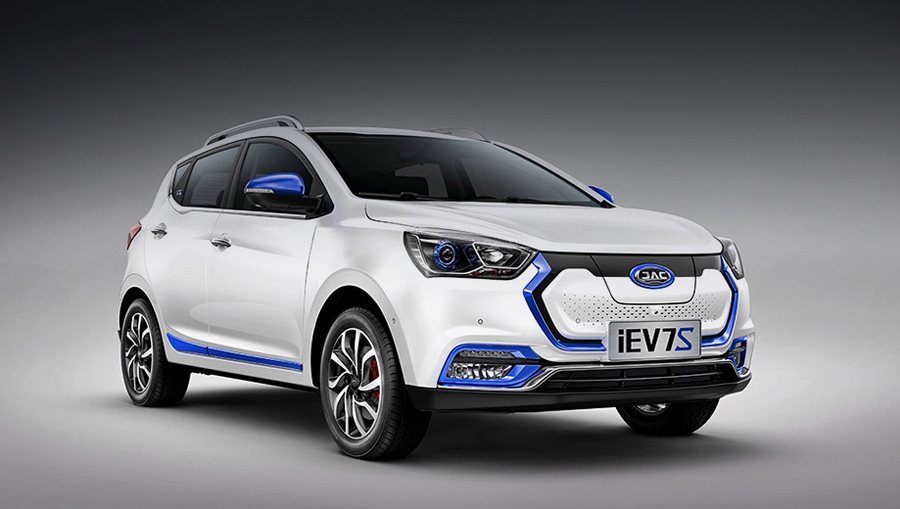Electric cars are slowly but inevitably diluting the car fleet. Charging stations are appearing everywhere, parking lots are being painted green, and more and more motorists are thinking about buying one. How does an electric car behave in winter? Does the battery drain faster? Do the chargers work in freezing temperatures of -10°C? Let’s take the JAC iEV7S as an example.

Electric cars, like cell phones, use lithium-ion batteries. At low temperatures such batteries use more energy, so the battery discharges faster. The electrolyte thickens and the electrochemical processes in the battery are slower. Poor conductivity of the electrolyte increases the internal resistance of the battery, which produces much less energy at the output. But good batteries can also work at -50°C.
The electric car is highly dependent on the performance of the battery, which in turn expends a lot of energy to cope with the weather conditions. More load – less range. It is necessary to maintain the temperature balance of the battery at all times. Battery coolers and heaters are used for this purpose.
Let’s consider the example of the JAC iEV7S electric car – one of the most affordable electric crossovers in Ukraine with a range of 300 kilometers. The electric motor capacity is 85 kilowatts. It is about 115 horsepower. The JAC is powered by a Samsung lithium battery, liquid-cooled and heated, its capacity is 40 kW / hour. The battery is warranted for 8 years or 150,000 km of mileage. During this time the degradation should not be more than 80%.

When braking, the regeneration system is triggered – this is when the battery recharges the battery from deceleration. It works when the speed is reduced to 70-90 km/h. You can increase recuperation and save charge in eco mode.
At -10°C, the active driving style covers 160-170 km, using the seat heating and heater. If you switch on the economy mode, drive with minimum acceleration and moderate operation of the heater, you can stretch the range at subzero temperatures for another 25-35 kilometers.
Recommendations for handling electric vehicles in cold weather
Technical inspection before frosts
Particular attention should be paid to the condition of the wheels. Poor tread increases the force of the braking system, consuming more energy. If there is insufficient pressure in the tires, it makes the car heavier and also uses more energy when driving.
The right place to store the car
The electric car should be parked in a heated garage where a stable temperature is maintained. If the room is warm, the battery will not discharge as quickly. It takes less time to charge the car in the garage, which will reduce energy costs.
Driving at low speeds
If your electric car has energy-saving modes added to its functionality, it’s better to use them more often.
Energy recovery function to save energy
Friction brakes waste energy. In winter, regenerative braking is recommended. The car will slow down without using the brakes. Many electric car owners note that regenerative braking can save up to 10-15% of the battery charge.
Regular recharging
In winter, the battery not only discharges faster, but also recovers its charge slower. It will take longer to fully charge the battery in freezing temperatures than it does in the summer. Electric car owners should take every opportunity to plug in their car even if it has enough charge.
